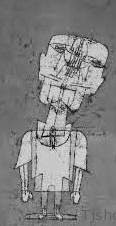the strange result(s) of Frank Tipler
I met Prof. Tipler in 1992 during a seminar in Vienna about relativity and cosmology, he was a visiting professor for a year and I remember very 'normal' discussions e.g. of the Reissner-Kerr solution.
Two years later he wrote about The Physics of Immortality and I thought that his book was quite interesting, although I disagreed with his conclusion(s) and I remember that I felt uneasy about the certainty with which he expressed his unconventional views.
He jumped the shark with his next book about The Physics of Christianity and I am not sure in which Lalaland he found himself after this jump ...
But he continues to write papers about quantum physics as a proponent of a 'hardcore' many worlds interpretation (m.w.i.) and this post is about one of his conclusions:
His interpretation is actually based on the Bohm interpretation, assuming a deterministic Hamilton-Jacobi evolution of a distribution of hidden variables. While the original Bohm interpretation considers particle positions, in the Tipler interpretation the different possible universes are the hidden variables. He understands the Bohr probabilities as Bayesian probabilities obtained by the many real observers in the multi-verse of all those universes. I think at this point his views are still compatible with m.w.i. a la Everett and he argues that the Heisenberg uncertainty principle follows from his proposal arising "from the interference of the other universes of the multiverse, not from some intrinsic indeterminism in nature". So far so good ...
But then he claims to have a test of his interpretation by measuring pattern convergence rates: Frequencies of events measured in real experiments with sample size N will converge as 1/N to the Born frequencies. And I think this has to be wrong.
He even notices that in classical statistics the frequencies of events following e.g. a Gauss distribution converge slower, i.e. 1/sqrt(N), and I wonder why this does not bother him. After all, it is not difficult to set up a simple quantum physics experiment which reproduces classical convergence. Consider a (weakly) radioactive source which triggers a Geiger counter with 50% probability in a certain time interval. Now we let the Geiger counter tick along and we can be quite sure that the sequence 100101011111000010101000... that we will obtain obeys the well known laws of conventional statistics.
What am I missing?
Can one use Tipler's result as (another) example that m.w.i. does not reproduce the properties of Born probabilities correctly?
Btw if you wonder why I wrote this post now ... I saw Tipler's name on this diagram and remembered that I always wanted to write something about his strange result.
Subscribe to:
Posts (Atom)
